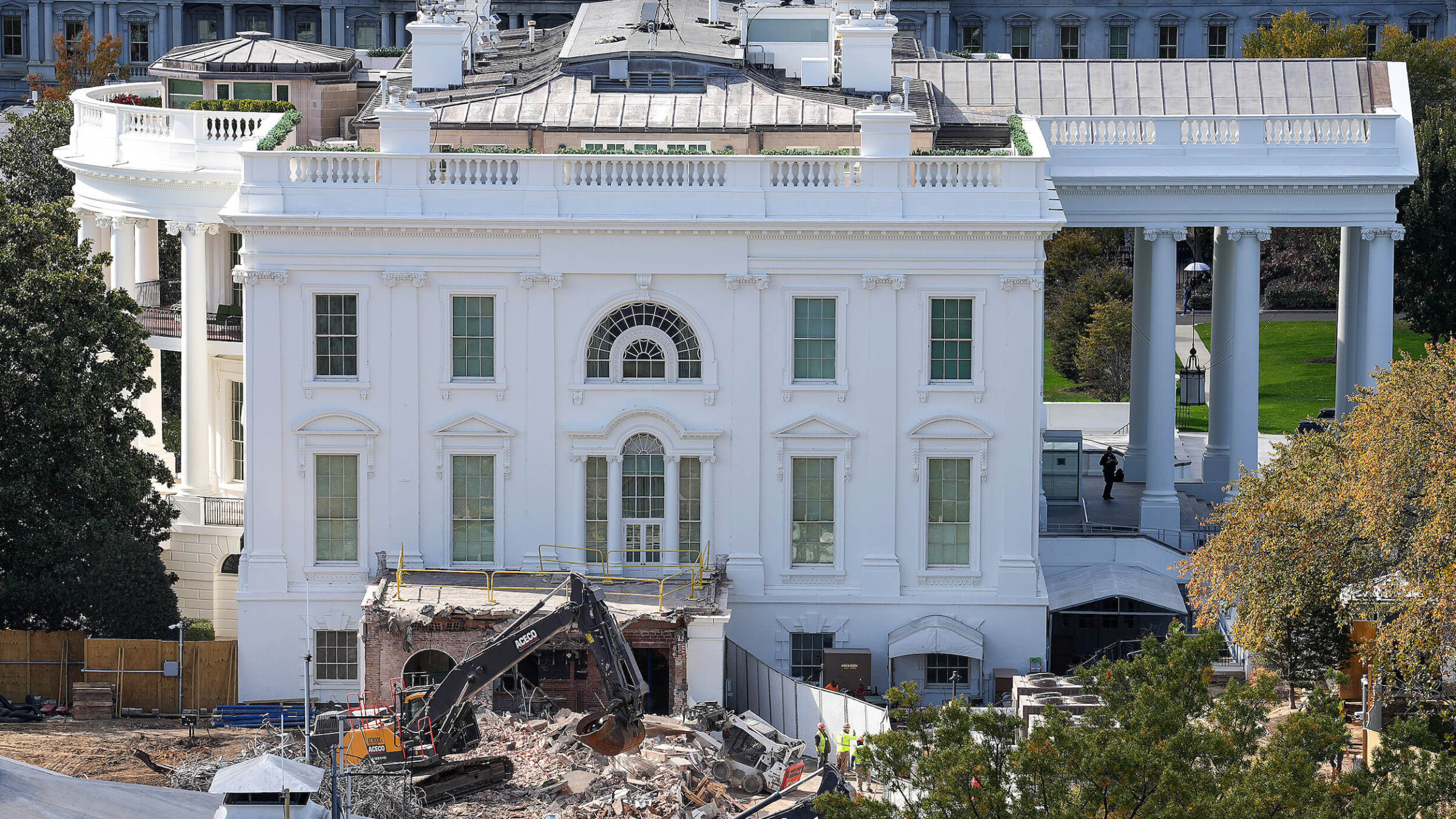Leonard Bernstein wrote a love song to the White House; now it’s an elegy
‘Take Care of This House’ takes on a new, mournful meaning after the demolition of the East Wing

An excavator works to clear rubble on Oct. 23 after the East Wing of the White House was demolished. Photo by Eric Lee/Getty Images
In 2017, Cynthia Erivo, clad in white like a bride, took the stage at Washington, D.C.’s Kennedy Center to perform “Take Care of This House.” It was opening night of the National Symphony Orchestra’s season, and Erivo was singing First Lady Abigail Adams’ solo from the little-known Leonard Bernstein and Alan Jay Lerner musical 1600 Pennsylvania Avenue.
That show, an ode to the first century of the White House’s existence, premiered in 1976, and has a rocky history: It closed on Broadway after only 20 performances, including previews. But the musical, while imperfect, was daring — a recounting of American history that featured a series of presidents, their first ladies, and their Black servants. Erivo sang in the first year of President Donald Trump’s first term. Then, having a Black actor on the Capitol’s most prominent stage sing the part of a white first lady — in a song that promises a Black servant he has a part in the American dream — felt like resistance.
Yes, the political tide might have been turning away from the heartfelt messaging of 1600 Pennsylvania Avenue, which suggested women and people of color were as central to American history as any white, male president. But in the world of culture, Erivo’s performance proclaimed, that kind of equal respect was still the true American dream.
Is it still?
Where Jacqueline Kennedy’s Garden, also known as the First Lady’s Garden, once bloomed, there is an expanse of yellow-brown dirt. The First Lady’s Office, shaped by Eleanor Roosevelt and Rosalynn Carter, is a heap of twisted metal. Where the corridors of power once linked the presidential operations of the West Wing to the visitor’s office — the point of public access to the public’s house — there is an expanse of scarred, dusty red brick, the innards of the house exposed.
Amid Trump’s demolition of the White House’s East Wing, the rubble where part of the most familiar facade in the country used to stand feels like a rebuttal to the simple exhortation Adams’ character expresses in “Take Care of this House.” “Keep it so clean,” she sings, “The glow can be seen / All over the land.”
Bernstein held a troubled but profound attachment to the vision of a United States that lived up to its founding promise of liberty and justice for all. That oft-broken pledge was a theme of West Side Story: “America,” with lyrics by Stephen Sondheim, is an unusually effective, and entertaining, argument both for and against maintaining hope in this country. Bernstein’s support for the civil rights movement was so well-known that it occasionally backfired, with Tom Wolfe famously asking if the composer’s activism was just a way of accenting his own glamour.
But the picture of a better country — a country that was true to its professed ideals — has rarely sounded as unglamorous, or as meaningful, as it does in “Take Care of This House.” Adams coaches her servant carefully: Make sure the doors are locked and the surfaces are shined, and be ever alert to anything even mildly amiss.
Whatever Bernstein’s failings as an activist, he understood something essential about what the White House means. It is an example of the best of the U.S. because it is humble: Not a palace, but a place that successive generations — especially First Ladies, and their unsung servants — have strived to make beautiful. Some people may visit the White House to gawk at the extravagance, or to feel the rumbles of the machinery of power. I suspect more do because they are drawn to their own sense of ownership of it — the idea that they, too, could have a small part in making it great.
Will Trump’s new ballroom make it greater than the First Lady’s Garden did? Greater than the quiet energy that came from standing between walls that had witnessed the making of history?
It’s true that luxury and ease are also manifestations of a kind of American dream — a different one than that which Bernstein and Lerner articulated. But today, watching Erivo sing Adams’ paean to the beauty of a carefully kept home, my heart aches. All that work, over all those decades, and the end is a landscape of desolate rubbish, with the suggestion of gaudiness to follow.
When I think back to my own visit to the East Wing of the White House in 2015, I think about the last lines of Bernstein and Lerner’s song: “Take care of this house / Be always on call/ For this house / Is the hope of us all.”
I felt a sort of soft awe back then. I wonder if that feeling is one I’ll ever have again.
















